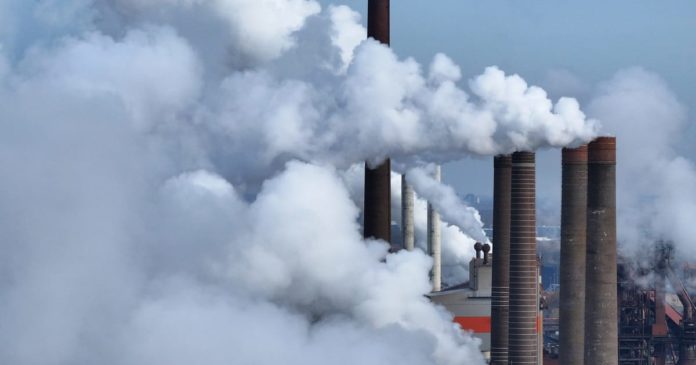An increasing number of people are dying from toxic air in Europe despite the EU’s efforts to clamp down on pollution.
Air pollution killed more people in 2021 than it did in 2020 and remains the top environmental health risk to people, according to a new data analysis by the European Environmental Agency (EEA) published Friday. Toxic air contributes to a number of respiratory and cardiovascular diseases, such as diabetes, asthma, lung cancer and stroke, the report says.
Despite the recent increase in deaths, the EU remains on track to achieve its goals set in the Zero Pollution Action Plan, which is part of the Green Deal, the EEA boss said at a press conference Friday. The action plan commits the EU to reduce deaths associated with fine particulate matter (PM2.5) pollution by at least 55 percent by 2030 compared to 2005 levels. It has so far achieved a 41 percent cut.
Still, Leena Ylä-Mononen, the executive director of the EEA, warned that “if we want to deliver on the ambitions of the Zero Pollution action plan, which says by 2050 we should have no significant impacts from pollution on health, we will need to step up our efforts to meet this ambition.” She hopes to see “a strengthening of existing standards in EU legislation.”
In the EU, 253,000 people died prematurely because of pollution from fine particulate matters in 2021 — that’s 15,000 more people than in 2020. The report added that 52,000 died because of exposure to nitrogen oxide pollution and 22,000 deaths were attributable to short-term exposure to ozone in 2021 — that’s 5,000 more deaths than in 2020.
But the health impact of air pollution goes beyond directly attributable deaths, the report says, as pollutants also play a role in diseases that reduce people’s quality of life, such as asthma and diabetes.
Overall, between 2005 and 2021, the number of deaths linked to PM2.5 pollution fell by 41 percent, the report stated. That’s “good news” and shows that “clean air policy works,” said European Commissioner for the Environment Virginijus Sinkevičius. “But we need to do better still, and bring pollution levels down further,” he added.
97 percent of the urban population in the EU was exposed to fine particulate matter pollution above the recommended World Health Organization’s guideline in 2021. Ylä-Mononen pointed out that regional inequalities persist across the bloc, meaning that poorer regions suffer from higher levels of air pollution — and there is “no evidence” of this gap narrowing, she said.
The new data comes as the EU is revising its binding air quality rules to try to align them more closely with the more stringent guidelines from the WHO. But setting stricter air pollution goals is proving difficult both in the European Parliament and in the Council of the EU, which represents the 27 governments.
In September, despite opposition from conservative political groups, the Parliament called for aligning EU air pollution limits with WHO standards by 2035 instead of 2050 as originally proposed by the European Commission.
EU capitals, however, do not want to set a binding commitment for matching WHO recommendations and proposed instead that the EU develops “a perspective for alignment … by the year 2050.” They also suggested giving EU countries up to 2040 to achieve the goals when they have especially strong difficulties complying with the stricter limits.
The Parliament and the Council are set to start inter-institutional negotiations on the file in the coming weeks.
Giovanna Coi contributed graphics and data analysis.
UPDATED: This article has been updated with comments from a press conference and to clarify that the recent rise in deaths is in contrast to a longer-term decline.


